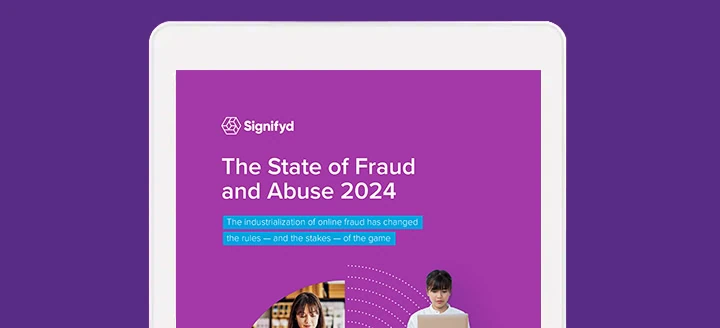Loyalty and reward programs have become a powerful tool in customer retention and engagement. According to Invesp, nearly 70% of consumers say they choose retailers based on where they can earn loyalty and reward program points. These programs help both retailers and customers win.
Unfortunately, criminals have found a way to compromise this winning scenario. Peter R. Maeder, co-founder of the Loyalty Fraud Prevention Association, tells PYMNTS.com about how consumers and the retailers don’t see accrued rewards points as currency. The accumulated points lack any kind of Guaranteed Fraud Protection and are at particular risk for digital fraud. Fraudsters find easy ways to steal both retailers and consumers.
Since this type of fraud is so common and yet still hard to fight, we’re here to help with an overview of the problem plus steps retail leaders can take to reduce their losses from loyalty and rewards program losses — from reduced sales and diminished customer satisfaction.
- Almost 70% of customers choose retailers based on their loyalty and reward programs.
- Loyalty and rewards accounts are a high-value cash item, worth $48 billion in the U.S. alone.
- 81% of consumers understand that a cash value is associated with loyalty and rewards points, but do not see themselves as victim of fraudulent activity when scammers steal these assets.
Fraudsters cash in big on loyalty program scams
With billions of dollars at stake across countless loyalty and reward programs, it is vital to understand how vulnerable these points-to-dollars programs are.
One major problem is that, as in data fraud, loyalty fraud goes largely unreported. Without reporting, most consumers don’t know that this is such a widespread problem. A recent consumer loyalty survey conducted by The Wise Marketer found 81% of consumers understand that a cash value is associated with loyalty and rewards points when they decide to use them, but they do not think of it in terms of opening them up to becoming a victim of fraudulent activity.
Fraudsters understand the cash value of loyalty accounts and focus their attention on this area for two main reasons:
- Loyalty and rewards accounts are a high-value item, worth $48 billion in the U.S. alone.
- The security threshold tends to be low for these accounts, which makes them easier targets than traditional bank accounts.
Among loyalty and rewards program managers, 72% report having experienced fraud. Fraudsters are casting a wide net in the reward and loyalty program fraud arena; therefore, all industries are at-risk. These criminals look for opportunities to scam companies with the weakest anti-fraud measures in place. If a company leaves an opening in fraud protection, fraudsters can find and exploit it for their gain.
It’s all part of fraud’s expanding footprint. Fraudsters have also turned to gift card scam, which are the perfect crime for them.
Instant delivery and minimal validation required — usually only the customer’s email address and few other verification steps — make it easy for experienced criminals to intercept the electronic gift card. Fraudsters move quickly on e-gifts, transferring the digital product quickly before the customer notices unusual behavior such as the redemption confirmation email.
Fraud moves fast. But merchants and shoppers can get ahead of these scams to protect their vested interests. It’s still a new fight in an evolving landscape, so any steps to stop loyalty and reward program fraud can help.
Retailers and customers can fight back
The best strategy for online fraud prevention solutions with loyalty and rewards programs is awareness and vigilance. Fraudsters will test the waters at all unguarded entry points, and most companies only learn about their program’s fraud vulnerabilities when consumers report issues — long after the fraudsters have pulled off their grifts.
Since consumers do not monitor or manage their loyalty accounts the same way they monitor their traditional savings and checking accounts, it could be weeks or months before the customer notices issues and files an incident report with the business. Fraudsters often start small, peeking into a rewards program account’s vulnerable entry path and using stolen or leaked credentials to see how far they can get. Once they determine that they can get anything without tipping off an account holder, they exploit the account for larger attacks.
Protecting customers and maintaining the popularity and ease of use of loyalty and rewards programs is a tricky line to walk. Here are some ways to encourage customers to protect their rewards as if they were cash:
- Educate customers on all aspects of your rewards and loyalty programs, such as its cash value and its appeal to fraudsters.
- Monitor customer account activity, including registration, login, transactions and email confirmation requests.
- Implement multi-factor authentication for loyalty and rewards program activities wherever possible.
Start reframing the issue to help stakeholders understand why these fraud losses hurt so much. More information and education is the best weapon we have to stop financial fraud, especially against this type of fraud that moves so quickly and silently.
More work to be done
Merchants that offer rewards and loyalty programs must do their share of monitoring as well. For example, fraudsters strike during high-volume shopping traffic times, such as Black Friday or Cyber Monday, to test credentials with a series of automated attacks. Retailers and ecommerce business leaders should align security policies to monitor the way users navigate their website, looking for signs of account takeover, which may come in the form of thousands of login attempts in just a few minutes.
Keeping customers happy, engaged and returning to shop again is the goal of loyalty and reward programs. Your customer experience strategy requires investments in friendly fraud prevention. Any time a customer loses time and money, whether it be from a poor shopping experience or a rewards scam that steals their hard-earned points, is a direct threat to your revenue stream. Stay ahead of the fraud curve by taking on loyalty and reward programs fraud through proactive monitoring and customer education. The rewards from these preventative steps will add up to a tighter sales funnel.












